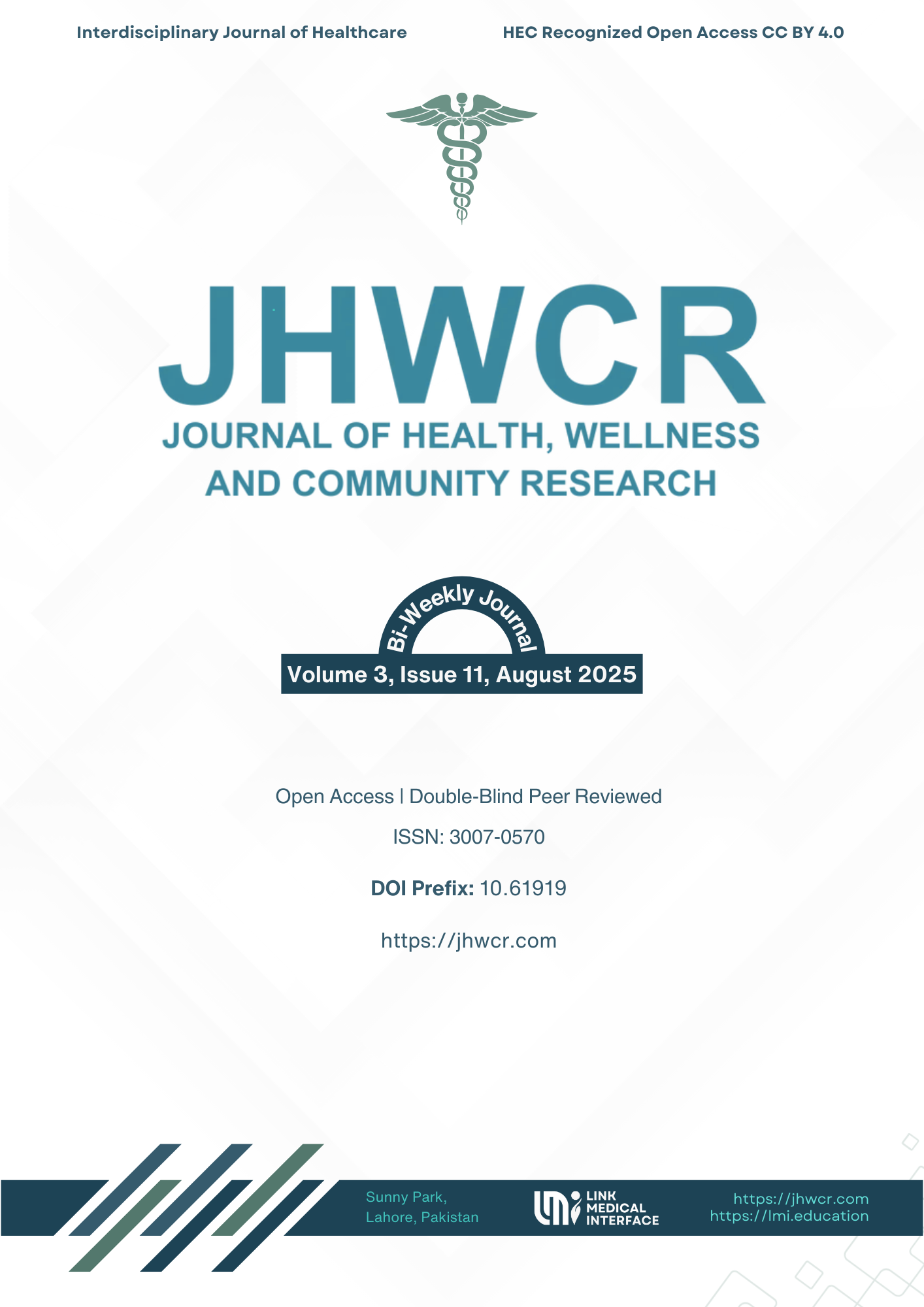Prevalence of Stress Fracture Among Pakistan Armed Forces Officials
DOI:
https://doi.org/10.61919/vamw8p58Keywords:
Stress fracture, military officers, prevalence, vitamin D deficiency, tobacco use, Pakistan Armed ForcesAbstract
Background: Stress fractures are overuse injuries of bone resulting from repetitive submaximal loading, commonly observed in military personnel due to high physical demands. While global evidence demonstrates significant burden among armed forces, limited data exist regarding prevalence and determinants of stress fractures in Pakistan’s military population, where cultural, nutritional, and environmental factors may further influence risk. Objective: To determine the prevalence of stress fractures among Pakistan Armed Forces officers and to identify associated demographic, lifestyle, and medical risk factors. Methods: A cross-sectional observational study was conducted over six months among 104 male Pakistan Army officers recruited through purposive sampling. Data were collected using a structured self-administered questionnaire covering socio-demographic characteristics, medical history, and lifestyle factors. Stress fracture diagnosis was confirmed through prior medical documentation. Descriptive statistics and inferential analyses, including chi-square tests and logistic regression, were performed using SPSS version 27. Ethical approval was obtained from the institutional review board, and informed consent was secured. Results: The prevalence of stress fractures was 59.6%. Tibia was the most affected site (25.6%), followed by foot (20.9%), ankle (16.3%), and knee (11.6%). Vitamin D deficiency (OR 2.12, p=0.04), previous bone injury (OR 2.73, p=0.03), and tobacco use (OR 1.87, p=0.04) were significantly associated with higher fracture risk. More than half of affected officers reported difficulty in performing military duties. Conclusion: Stress fractures are highly prevalent among Pakistan Armed Forces officers, with biological and lifestyle factors emerging as significant determinants. Preventive interventions targeting vitamin D deficiency, tobacco cessation, and workload management may reduce fracture burden and improve operational readiness.
Downloads
Published
Issue
Section
License
Copyright (c) 2025 Syeda Fatima Asif Zaidi, Sumiya Ramzan, Muhammad Umair Shaikh, Capt. Syed Faizan Hussain, S. Fahmida Qamar, S. Fareha Asif Zaidi (Author)

This work is licensed under a Creative Commons Attribution 4.0 International License.


